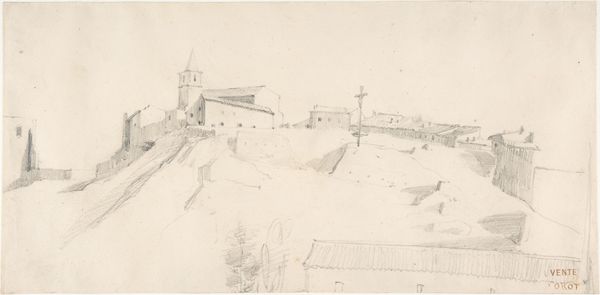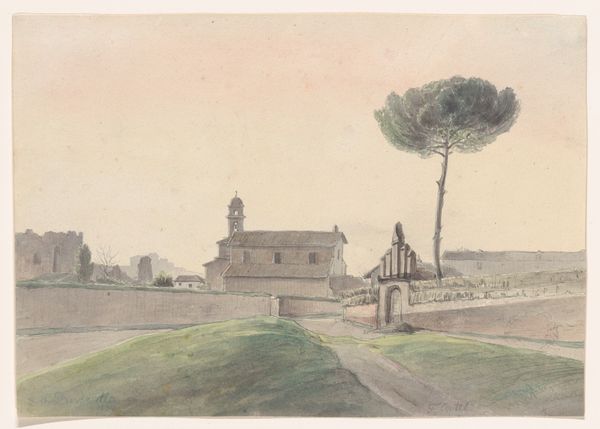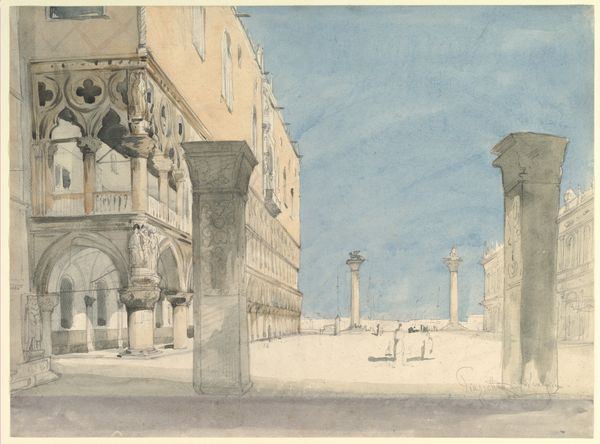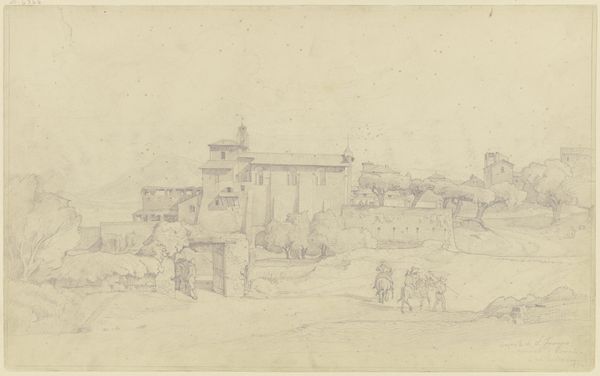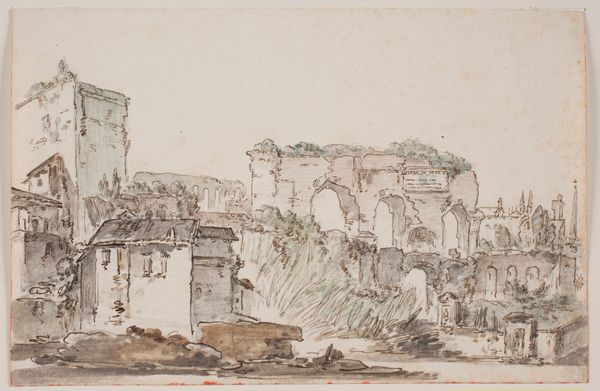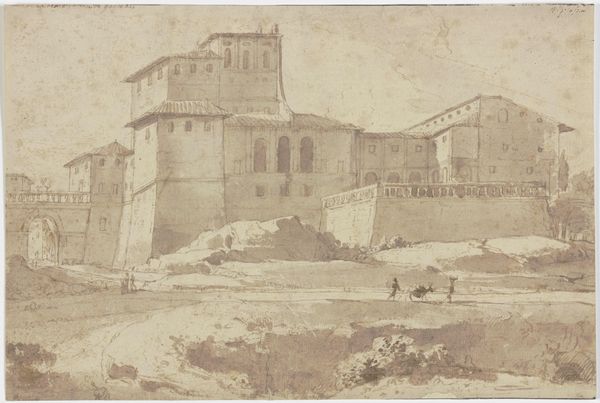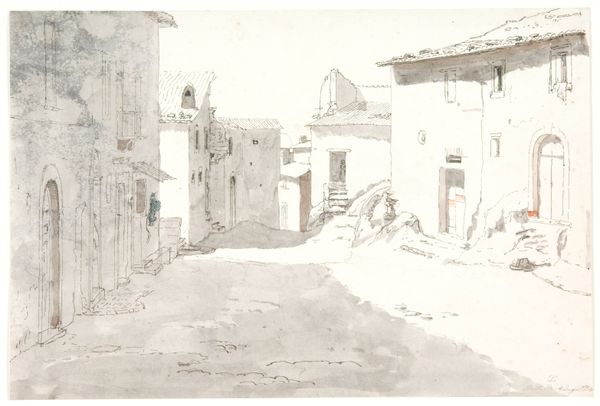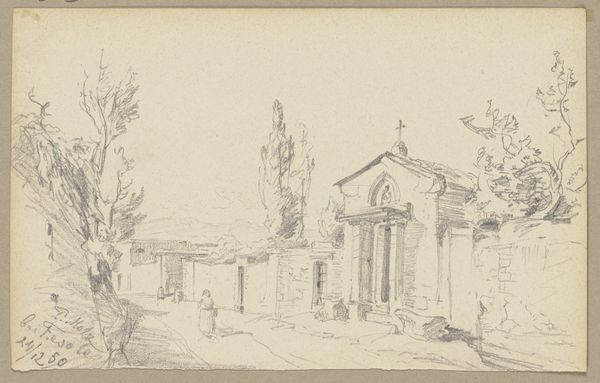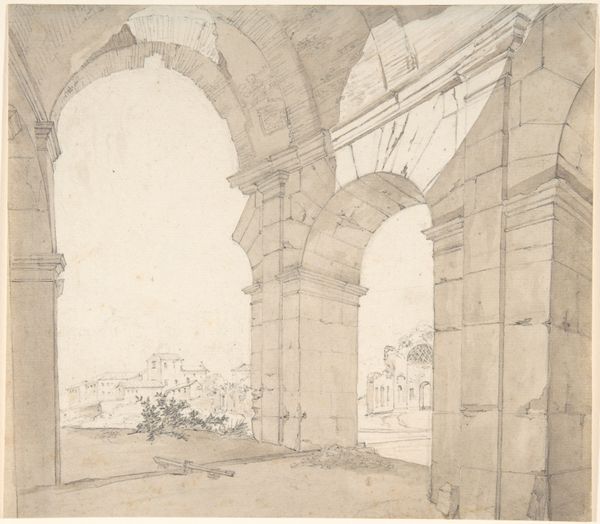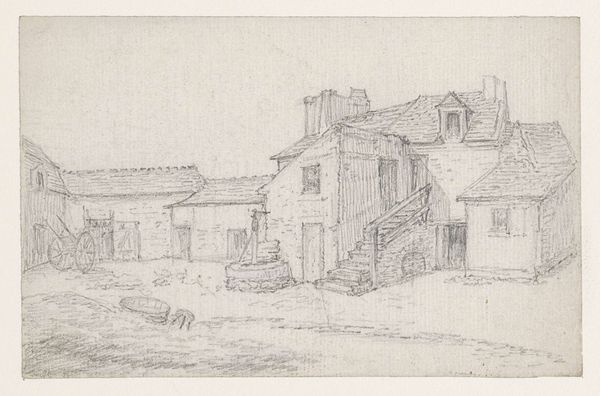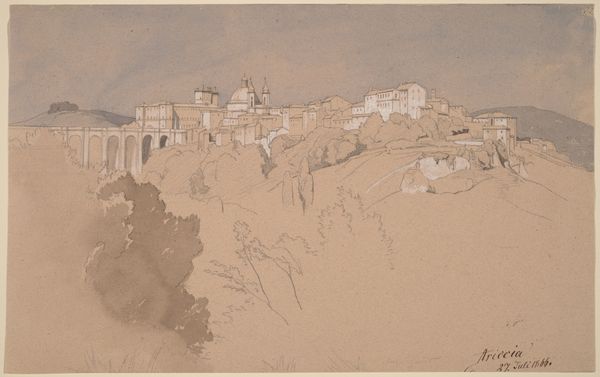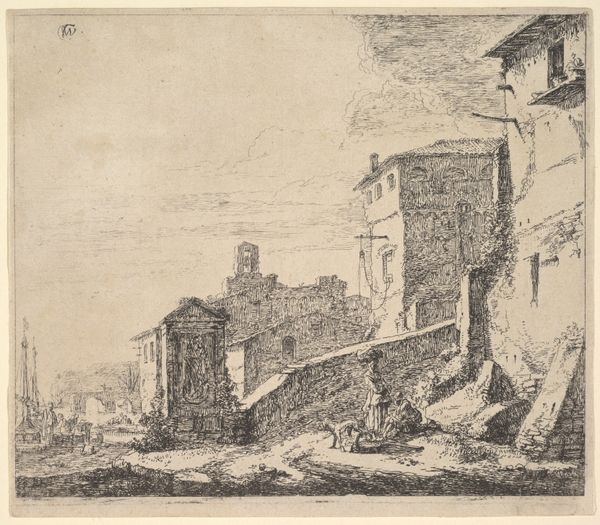
SS. Giovanni e Paolo, seen from the Villa Mattei, Rome 1825 - 1891
0:00
0:00
drawing, coloured-pencil, print, watercolor, sculpture
#
drawing
#
coloured-pencil
# print
#
landscape
#
classical-realism
#
watercolor
#
coloured pencil
#
sculpture
#
cityscape
#
academic-art
Dimensions: 9 7/16 x 17 3/8 in. (23.9 x 44.2cm)
Copyright: Public Domain
Editor: So, this is Jean-Achille Benouville’s "SS. Giovanni e Paolo, seen from the Villa Mattei, Rome," created sometime between 1825 and 1891. It’s a drawing, a cityscape rendered in watercolor and colored pencil. There's a sort of hazy, dreamlike quality to it. What strikes you about this piece? Curator: What’s most compelling here is how Benouville uses readily available, portable materials like watercolor and colored pencil to capture this Roman scene. Consider the economic implications. These materials were relatively inexpensive and accessible, opening landscape drawing to a broader market than oil painting might have. What kind of labor do you imagine went into producing those pencils? Editor: That's interesting. I hadn’t thought about the materials themselves. So, the accessibility of the materials democratized landscape art? Curator: Precisely! And what does it mean when we categorize this as "high art" versus something like illustration or a preparatory sketch? How does the final display in a museum change our perception, given the probably more informal circumstances of its making? This challenges those divisions. Editor: I see what you mean. Presenting something created from relatively basic materials in the refined setting of a museum changes the context and elevates its status. It almost disguises the means of its production. Curator: Exactly. By focusing on the materials and their context, we can challenge these historical power dynamics and the definitions we place on art. Editor: That really changes my perspective on the piece. It’s no longer just a pretty landscape drawing; it’s a product of its time, with implications about class and accessibility tied to the very materials used to create it. Curator: Absolutely. Analyzing the material reality transforms how we understand the artwork’s meaning and place within art history.
Comments
No comments
Be the first to comment and join the conversation on the ultimate creative platform.
